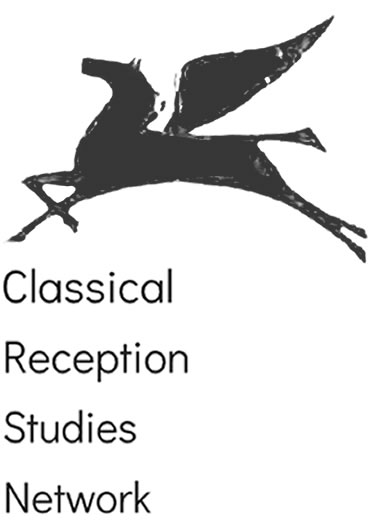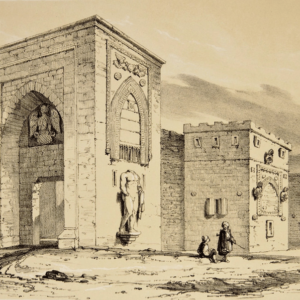This post is written by Andrew Peacock, Bishop Wardlaw Professor of Islamic History at the University of St Andrews
The Islamic world is well known to have played a crucial role in the transmission of classical learning to Europe, primarily through translations of philosophical texts made both in ninth century Baghdad and medieval Spain, which also exerted a massive influence on Islamic philosophers, many of whom were profoundly indebted to the legacy of Aristotle, Plato and Plotinus. The classical legacy is also reflected in the cult of Alexander the Great, who became the subject of numerous literary and popular epics in almost every literary language of the Muslim world, derived ultimately from the Hellenistic Alexander Romance. At the same time, medieval Muslims had a particular fascination with the idea of Rum – the term in Arabic which denoted Byzantium, after the Byzantines’ self identification as Rhomaioi (Romans), but also had a much wider range of meanings that could eventually range from, depending on time and context, the Ottomans themselves as the Byzantines’ successor to Iberian Christians.
Rum could refer to both a people and a place. It first appears in the Qur’an in Sura 30 (which is named after it), ‘The Rum have been defeated in the nearer part of the land; and, after their vanquishing, they shall be the victors after a few years (Qur’an 30:2-4, after the translation by Arberry), which is generally thought to refer to the Byzantines’ defeat by the Sasanians in 614, although the verses are distinctly ambiguous, as an alternative accepted vocalisation gives them precisely the opposite meaning, and predict a defeat of Rum. Later Muslims adopted these verses for prognosticatory purposes relevant to their own circumstances, and they were claimed to foretell anything from the fall of Jerusalem to Saladin in 1187 to the victory of the Turkmen dynasty of the Aqqoyunlu in eastern Anatolia in the fifteenth century (El Cheikh 1998; cf Kafadar 2007: 7).

Irrespective of the ambiguities of interpretation, it was doubtless the Qur’anic reference to Rum that afforded the term a wide currency in the Islamic world, and indeed became a term with which Muslims themselves started to identify. This can be traced to the aftermath of the Turkish conquest of Anatolia in the late eleventh century, out of which the Seljuq dynasty eventually emerged as both the major victor, and as the inheritor of the Byzantine lands in Anatolia. Now Rum started to acquire a dual meaning in the languages of the Islamic world, confusingly potentially referring either to Byzantium, or to their Muslim rivals, who styled themselves the sultans of Rum. This was not the only way in which the classical inheritance was adopted by the Seljuqs, who also asserted their legitimacy as rulers of Yunan, i.e. Ionia, but more broadly the coastal areas of Anatolia (Korobeinikov 2013).
Indeed, links with the classical past played an important part in the public imagery of the Anatolian Seljuqs. The walls of the principal city, Konya, were decorated with hadith, quotes from the Persian epic the Shahnama, and classical statuary. Doubtless such statuary had an apotropaic purpose, but there was also much interest in figures from the classical past. Indeed, the tomb of Plato was itself reputed to be located next to the congregational mosque in Konya, and several other place names in the region reveal a veritable thirteenth-century cult of Plato who virtually elevated to the status of patron saint of Muslim Konya. It has been suggested that this was related to political interest in Platonic ideas reflected in the Muslim philosopher Suhrawardi’s Philosophy of Illumination, which may have played a role in legitimising the dynasty (Yalman 2019). Moreover, classical era remains were often repurposed by the Seljuqs. Thus the great theatre of Aspendos in southern Turkey, near Antalya, built in the second century, became in the thirteenth century a palace or caravanserai under Seljuq patronage, but numerous Seljuq buildings would have contained substantial spolia showing the appropriation of the past (Redford 1993).

The Seljuqs thus projected an image of themselves as rulers of Rum, heirs to and rightful possessors of the Byzantine and classical heritage. After the demise of the dynasty, this strategy would be continued by their ultimate successors, the Ottomans, who of course after 1453 made Constantinople their own capital. Mehmed the Conqueror employed not just Arabic, Persian and Turkish writers to sing his praises, but also Greek and Latin ones. Very recently a forgotten Latin epic on his deeds has been translated for the first time, the Amyris by Giovanni Mario Filelfo (Akman and Akman 2023).

Indeed, Mehmed seems to have equated himself and Turks with the Trojans, and a manuscript of the Iliad was copied for his court, while Filelfo’s epic even claimed the conquest of Constantinople was his revenge on the Greeks for the sack of Troy. While such explicit identifications with classical antiquity do not seem to have survived the fifteenth century, Süleyman the Magnificent (1520-1566) proclaimed himself in his inscriptions ‘Caeser of Rum’ (Rum’a Kaysar). Subsequently, interest in the classical past seems to have waned as part of official propaganda, but did not completely disappear, and as late as the eighteenth century the mufti of Athens, Mahmud Efendi, wrote a Turkish account of what he could find out about his home city’s history and antiquities from classical times (Tunalı 2020).

